Coneflower is definitely one of the best America’s 3 to 4 feet (91.5 cm – 1.2 m) tall perennial prairie plants. Thanks to its lovely, white, yellow, orange, pink, red, or purple daisy-like blooms, it is an ideal choice for a xeric garden, borders, and native-grass lawns.
All ten species of this drought-tolerant plant originated in North America. You will enjoy these flowers placed on the prickly stems, which are attractive to bees and butterflies and resistant to deer. For centuries, it is used for boosting the immune system and treating cold and flu.
Varieties of Coneflower
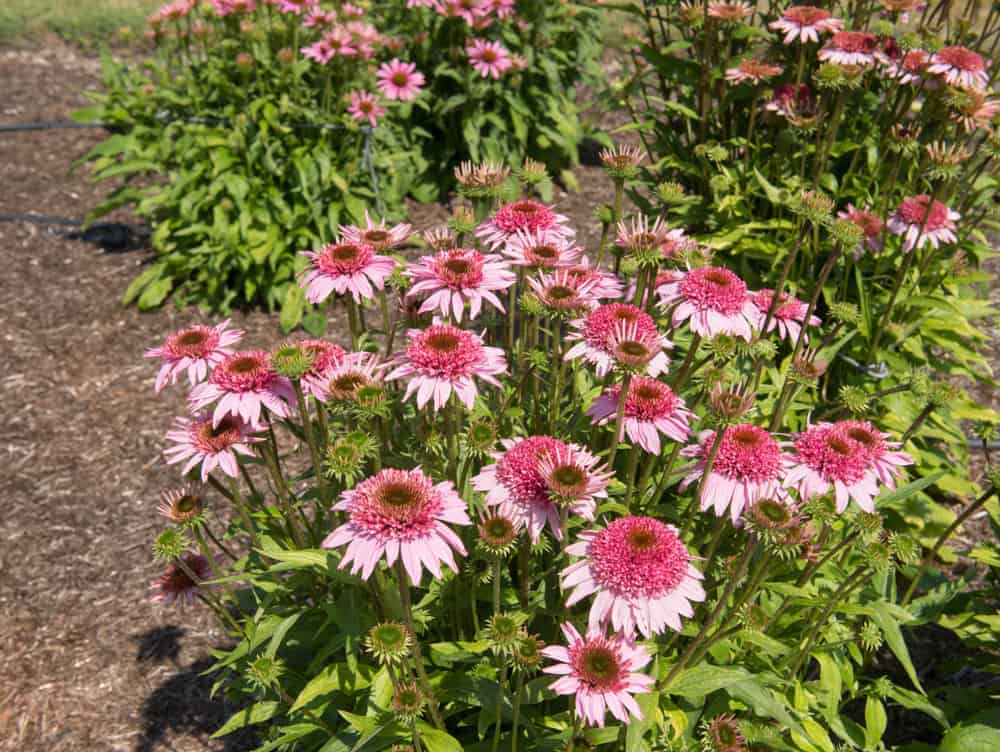
There are ten identified native species of Coneflower.
- Echinacea purpurea – Purple coneflower is probably the most favorite variety of this flower. It is actually a well-branched, 2 to 6 feet (61 cm – 1.8 m) tall shrub with leafy stems. You will admire dozens of blooms with flat, rose-pink to violet rays.
- Echinacea serotina – That lovely narrow-leaved purple (blacksamson) coneflower is easily recognizable for its stiffer, bristly hairs on leaves.
- Echinacea angustifolia – It is a compact, narrow-leaved coneflower, which can reach 1 to 2 feet (30.5 – 61 cm) in height. I like its 2 inches (61 cm) large heads with 1 inch (30.5 cm) long pink rays on leafless stems.
- Echinacea sanguinea – Sanguine purple coneflower is a graceful plant with unbranched, 3 feet (91.5 cm) tall stem. On each stem, there is one flower head with 10 to 20 drooping, 2 inches (5 cm) long, rose-pink rays.
- Echinacea pallida – With its 3 to 4 feet (91.5 cm – 1.2 m) tall leafless stems, this pale-purple, branching plant is unique and attractive.
- Echinacea atrorubens – Topeka purple coneflower is a 1 to 3 feet (30.5 – 91.5 cm) tall flower with purple, rarely white or pink blooms. Its leaves and stem are hairy and light green.
- Echinacea simulata – Approximately 2 to 3 feet (61 – 91.5 cm) tall purple Coneflower is well-known for its beautiful pale pinkish-purple blooms. It is a coarse, hairy, plant growing on dolomite glades in the Ozark region.
- Echinacea paradoxa – You will adore this bright yellow, 2.5 to 3 feet (76 – 91.5 cm) tall Coneflower. It grows in multi-stemmed clumps surrounded with the basal, broadly lance-shaped foliage.
- Echinacea tennesseensis – Tennessee coneflower is approximately 1 to 3 feet (30.5 – 91.5 cm) tall plant. Its rose-purple rays make this flower unique among all other Coneflowers.
- Echinacea laevigata – Smooth Coneflower has a large head with drooping pal-rose rays and smooth leaves.
How to Plant Coneflower in Your Garden
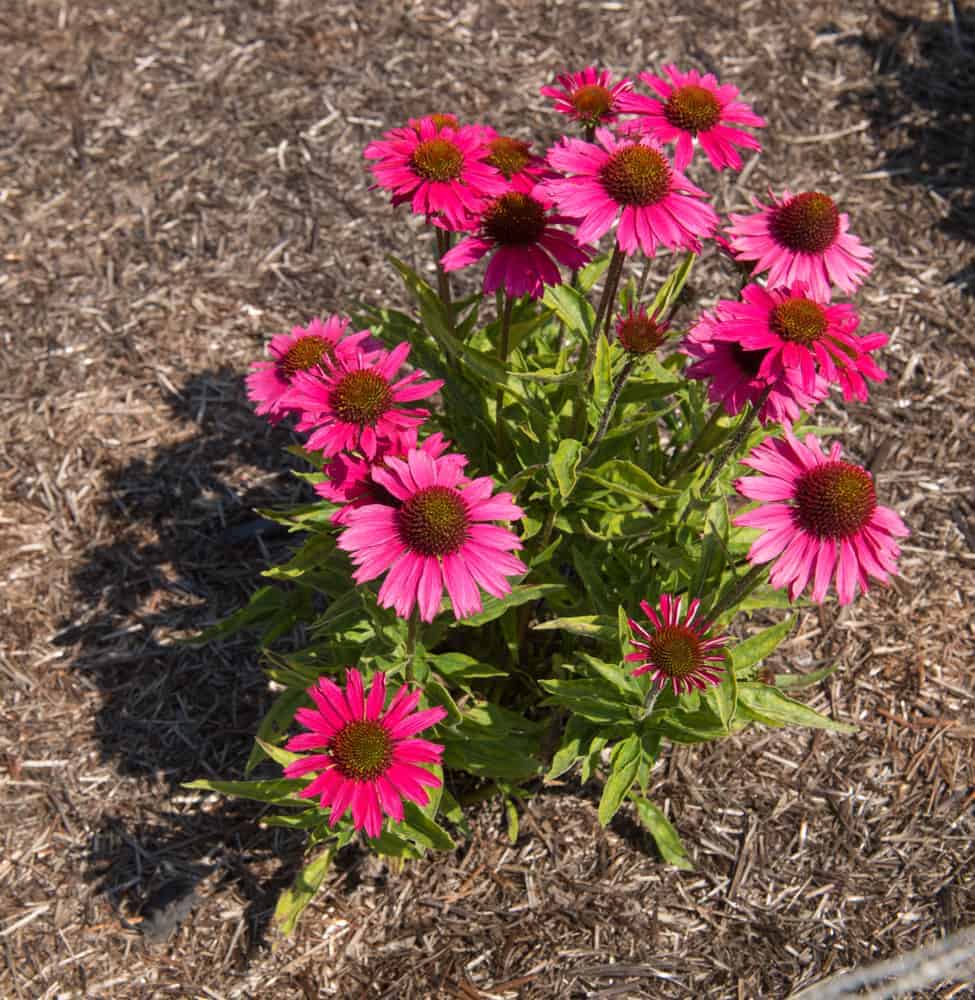
Since Coneflower establishes deep taproots, you should try to choose the right spot for it from the very beginning. Once established, this flower doesn’t like being moved.
Plus, if you don’t deadhead blooms, this sow-seeding plant will keep growing by itself. Thanks to its trait to grow in clumps, it won’t spread too much.
Propagation by seeds
- Sowing Coneflower outdoors
When you decide to sow Coneflower for the first time, the best moment for that action is in spring or autumn. It is not too complicated, and even novices will do the job effortlessly.
When starting this flower directly in the garden, you should begin by loosening the top 12 inches (30.5 cm) of the soil and adding 2 to 4 inches (5 – 10 cm) of compost to the top. Spread seeds over it and wait for approximately a month to germinate. You will notice the first true leaves after about three months.
- Sowing Coneflower indoors
If you start growing your flower in a pot, you should plant it in winter and transplant it in the garden in early spring when the danger of frost passes. The recommended temperature in the room where you will keep the pot is at least 65 F (18 C).
The essential thing is to soak seeds in water and place it, while it is still damp, in the refrigerator for two to two and a half months. That way, you will simulate winter coldness. After taking seeds out, plant them and let them germinate within about two weeks.
Start transplanting by digging a hole with a shovel. It should be twice as wide as the plant’s pot. How deep the hole needs to be will depend on the size of the root ball.
Take care to place the plant with the top of the root at the level of the ground surface. Fill the hole with the mix of garden soil and substrate in 50:50 ratios.
Propagation by division
You can start Coneflower from roots if you have already had an older plant in your garden. For the division to be successful, you need to pick out three to four years old plant with the well-developed root system.
Basically, you can divide roots of your flower once in three years. Dig taproots, split them up in fall, and plant pieces in previously prepared holes. Water abundantly and wait for new plants, which will beautify your garden.
The fact is that Coneflower doesn’t need to be divided to keep thriving. It seems that it doesn’t like it as well, plus dividing is not an easy job.
Once the plant establishes taproots, it will be quite challenging to remove it from the ground without damage. Therefore, maybe sowing seeds is a better and easier way to get new plants.
How to Care Coneflower in Your Garden
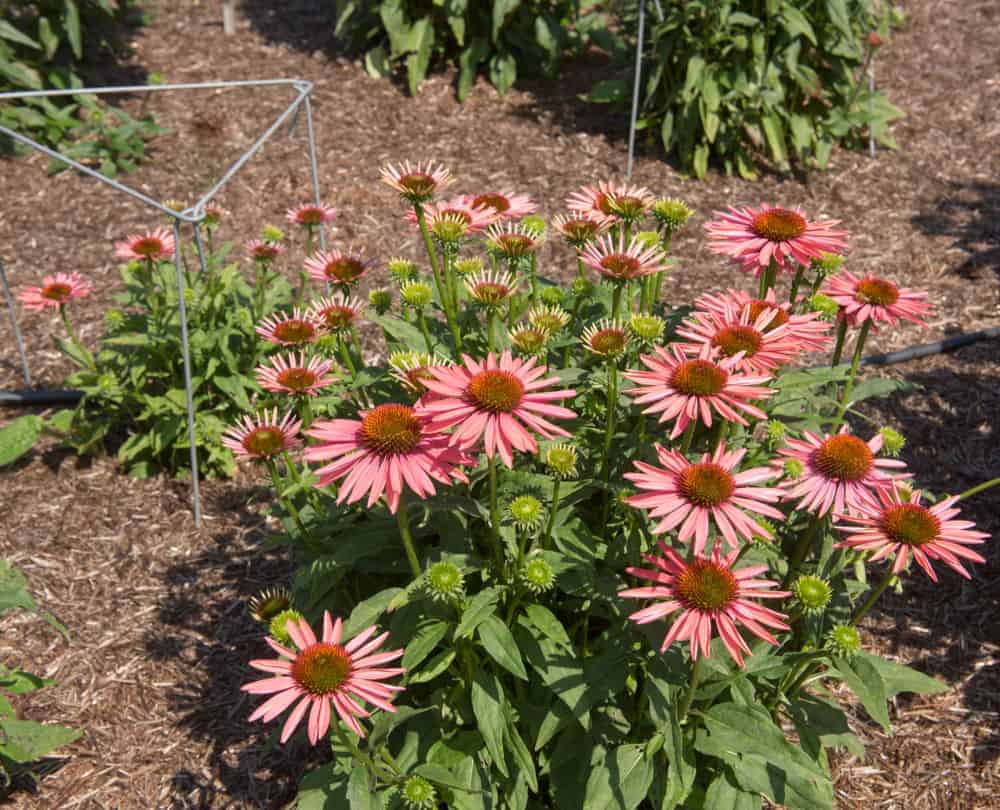
Space
Since Coneflowers grow 36 to 48 inches (0.9 – 1.2 m) tall on average, you should plant them at least 12 to 24 inches (30.5 – 61 cm) apart.
Soil
When you want to grow Coneflower in your garden, you should provide the neutral soil with the range of pH from 6.5 to 7.0. The best options for this plant are the sandy, clay, or rocky ground, but avoid the mucky and wet ones.
Light
Even though Coneflower tolerates partial shade, you need to plant it at a place with at least four to five hours of full sun a day. If you expect it flourishes abundantly, grow this plant along the edges with morning shade and afternoon sun.
Temperatures
Coneflower is a native prairie plant, which means that it will grow healthy and vigorous in the hot and dry regions. Fortunately, it can handle a wide range of temperatures and humidity, except in rainy areas with the continually wet ground.
Watering
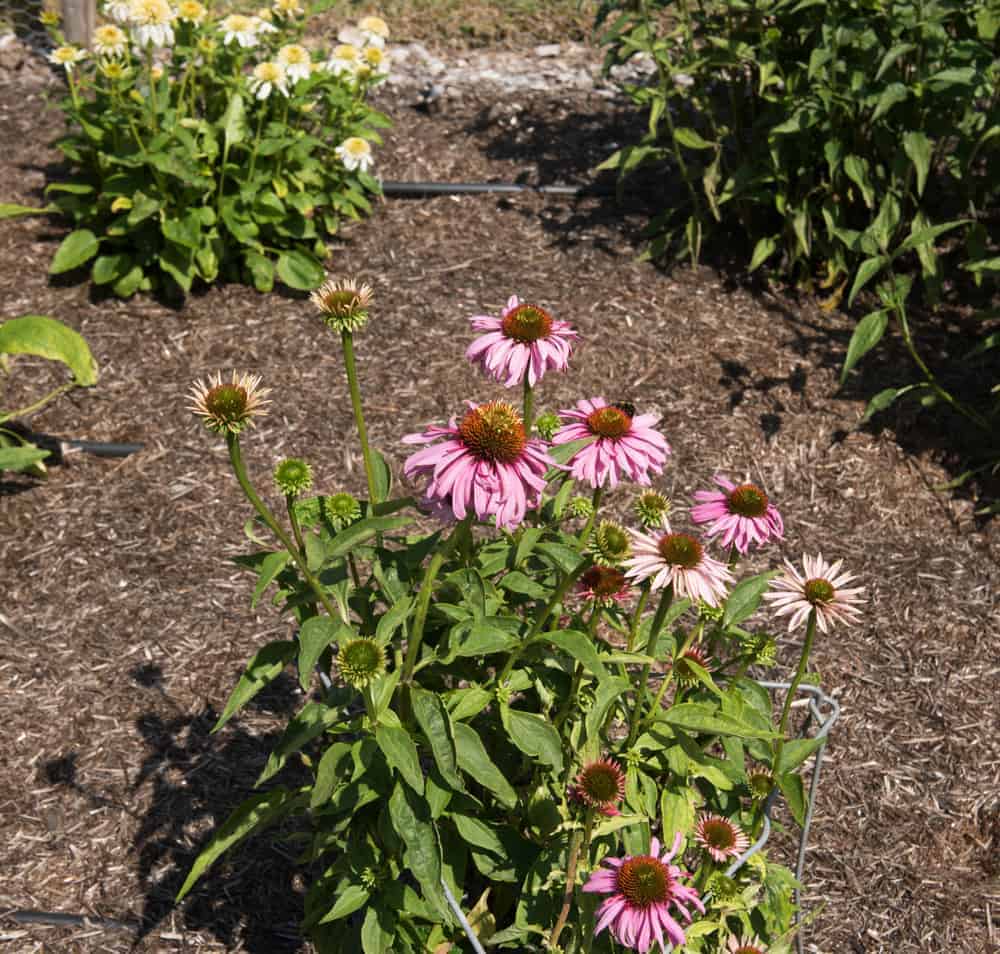
In the very beginning, you should water young plants every other day. Once established, this is a quite drought-tolerant flower. That means that you need to water it thoroughly when the top inch (2.5 cm) of the ground is dry.
In general, this prairie plant will need some water just when there is no rain for more than two months in the region where you live. However, if you want abundant blooming, you should water your plant a little bit once a week.
Fertilizing
Coneflowers will thrive if the ground is high in organic matter. However, an excessive amount of supplemental fertilizer may cause the occurrence of leggy plants.
In fact, native plants won’t need additional feeding at all. Just a thin layer of compost will be enough for the healthy growth and abundant blooming.
Mulching
Adding a 2 inches (5 cm) thick layer of mulch around your plant in the spring will improve the fertility of the ground. Also, it is crucial adding some compost over the soil at the time of planting.
Supporting
Since Coneflower is a sturdy plant, it will require staking quite rarely. You may need to support it if you live in a windy region or if the stalks of your flowers are floppy and leggy because growing in full shade.
It will be enough to use one stalk and tide your plant to it with soft twine. There is also an option to place a circular stake to support clumping flowers.
Pruning and deadheading
Deadheading is an excellent way to prolong the period of your Coneflower blooming. Cut all dead flowers as soon as you notice a new bud in the leaf armpit. If you plan to propagate new plants from seeds, leave flowers at the end of the season to form seeds.
Even though you don’t need new plants, you can avoid deadheading the last crop to let seeds develop and become food for birds.
On the other hand, pruning is a convenient way to control the size of your plant and delay blooming a little bit. There is one fascinating thing when we are talking about pruning Coneflower.
If you cut some stems to approximately 30 inches (76 cm) height in early spring, you will delay their flowering. That way, uncut stems will flourish first and cut stems will ‘late’ a little bit. The result will be more-compact growth and a staggered and more extended bloom season.
Coneflower Pests and Diseases
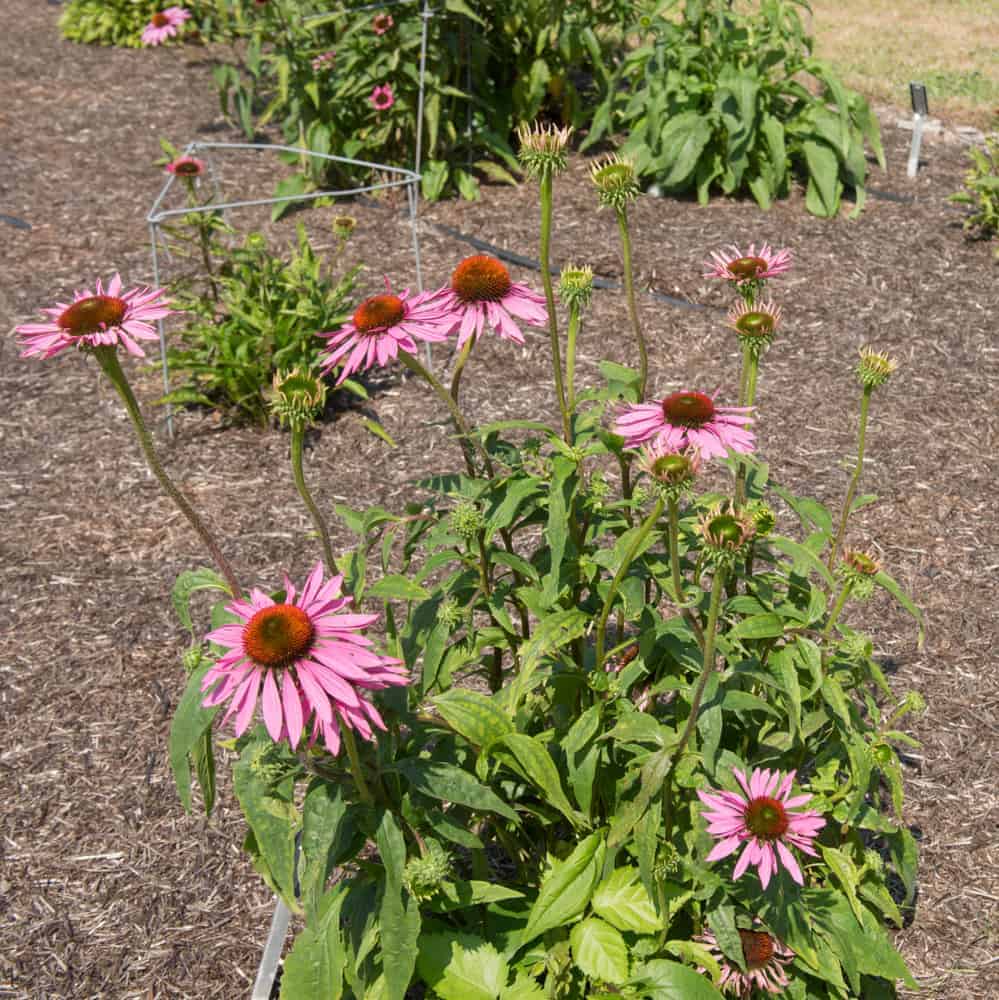
- Stem rot – This problem occurs when you overwater your flowers. Keep the soil moist but not soggy, and you won’t have any problem with rotting.
- Aster yellows – Various insects transmit this disease when the conditions of growth are not adequate. You will notice distorted, green flowers, and your plant will grow slowly and die eventually. Solve the problem by destroying the infected plants. Excellent prevention is to plant your flower in the well-draining, moderately moist ground.
- Aphids – These insects suck valuable nutrients from the foliage of your plant until killing them eventually. The honeydew they excrete will probably cause black mold along the plant’s stem. Get rid of them by applying insecticidal soap spray with a spray bottle.
- Leafhopper – These tiny green bugs cause considerable damage to leaves of your flower. The result will be the occurrence of curl, whither, and yellow leaves. Keep them under control by applying an appropriate insecticide.
- Japanese beetles – You will probably spot them in June. They may quickly destroy plants because they feed on their flowers and leaves. Destroy these bugs by applying an insecticide.
- Whiteflies – These tiny insects suck juices from leaves and stems of Coneflower. The result is the curled, distort, yellowish foliage. Unfortunately, you will have difficulties to control this condition by insecticides. The only thing you can do to get rid of these pests is to remove damaged plants. Then wash bugs away with a garden hose and apply neem oil.
- Eriophyid mites – They feed on the flower buds, which become damaged and distorted. Once they appear, you should cut the foliage to the ground and destroy them. Treat your plant with an insecticidal soap spray or handpick bugs.
- Foliar nematode – They will cause purplish, angular marks between veins of the foliage. They will become tan over time. The only way to solve this problem is to remove the infected flowers. The best solution is to prevent this condition by appropriate watering. Every time you water your plant, take care to avoid wetting stems and leaves.
- Rabbits – These cute animals are a huge problem for gardeners growing Coneflowers. They like nibbling young seedlings. Keep them far away from your flowers by applying hot pepper wax spray around your plants.
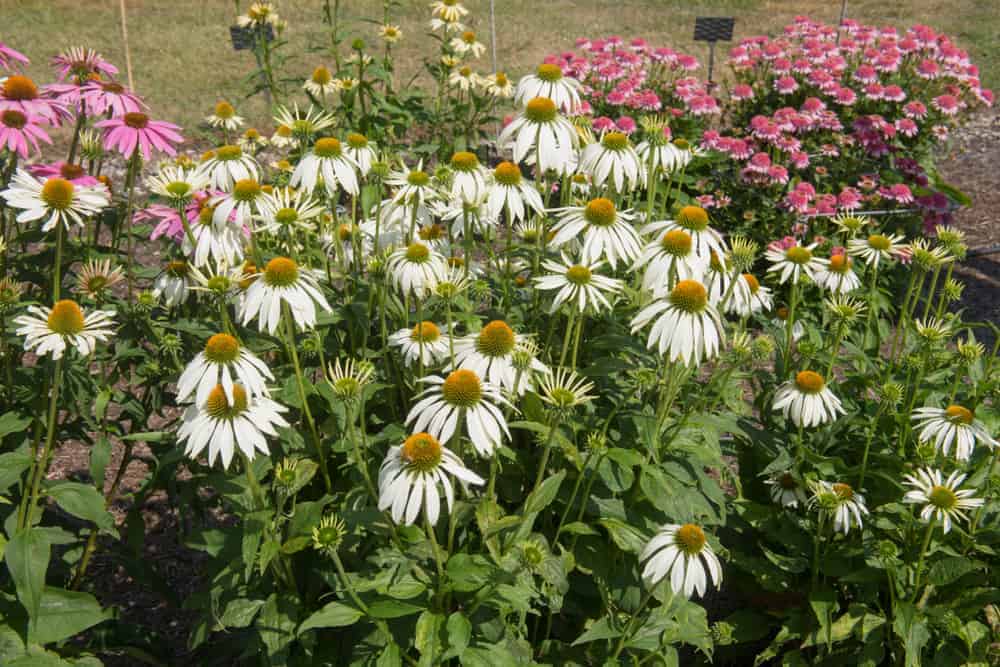
Leave a comment